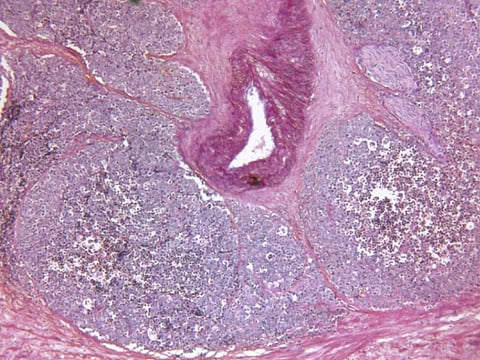WEDNESDAY, May 17, 2017 (HealthDay News) -- Distinct clinical outcomes are seen for luminal- and basal-like prostate cancers, according to a study published online May 11 in JAMA Oncology.
Shuang G. Zhao, M.D., from the University of Michigan in Ann Arbor, and colleagues used the PAM50 classifier to subtype 1,567 retrospectively collected and 2,215 prospectively collected prostate cancer samples. The authors examined the correlation of subgroups with clinical outcomes and treatment response.
The researchers found that the PAM50 classifier consistently segregated prostate cancer into luminal A (34.3 and 33.3 percent in the retrospective and prospective cohorts, respectively); luminal B (28.5 and 32.6 percent, respectively); and basal (37.1 and 34.1 percent, respectively) subtypes. Known luminal lineage markers, including NKX3.1 and KRT18, and basal lineage CD49f signature were enriched in luminal-like and basal-like cancers, respectively. In both univariate and multivariate analyses accounting for standard clinicopathologic prognostic factors, luminal B prostate cancers exhibited the poorest clinical prognoses, followed by basal prostate cancers, and luminal A prostate cancers. In a subset analysis in the retrospective cohorts, only luminal B prostate cancers were significantly associated with postoperative response to androgen deprivation therapy (ADT), although both luminal-like subtypes correlated with increased androgen receptor expression and signaling.
"These findings contribute novel insight into prostate cancer biology, providing a potential clinical tool to personalize ADT treatment for prostate cancer by predicting which men may benefit from ADT after surgery," the authors write.
Several authors disclosed financial ties to the biopharmaceutical industry.
Abstract/Full Text
Editorial


